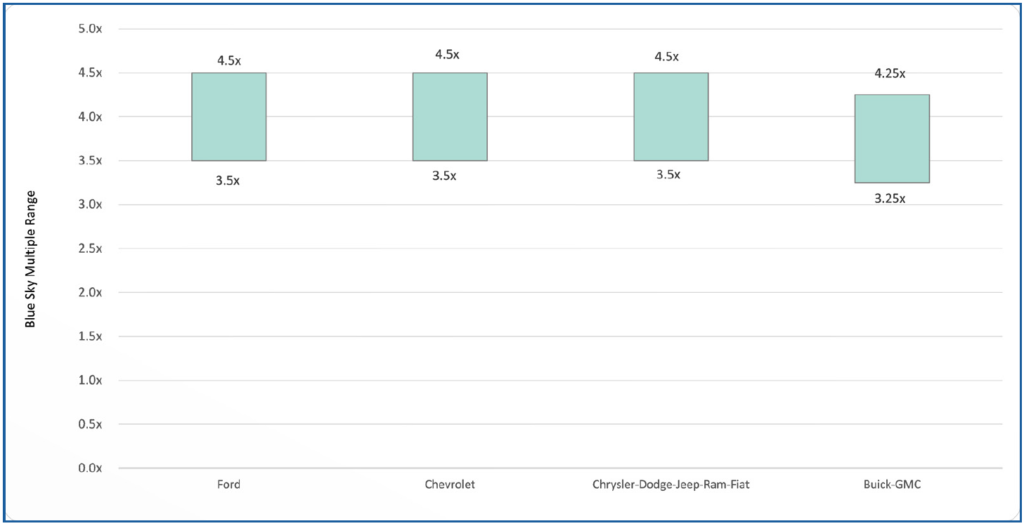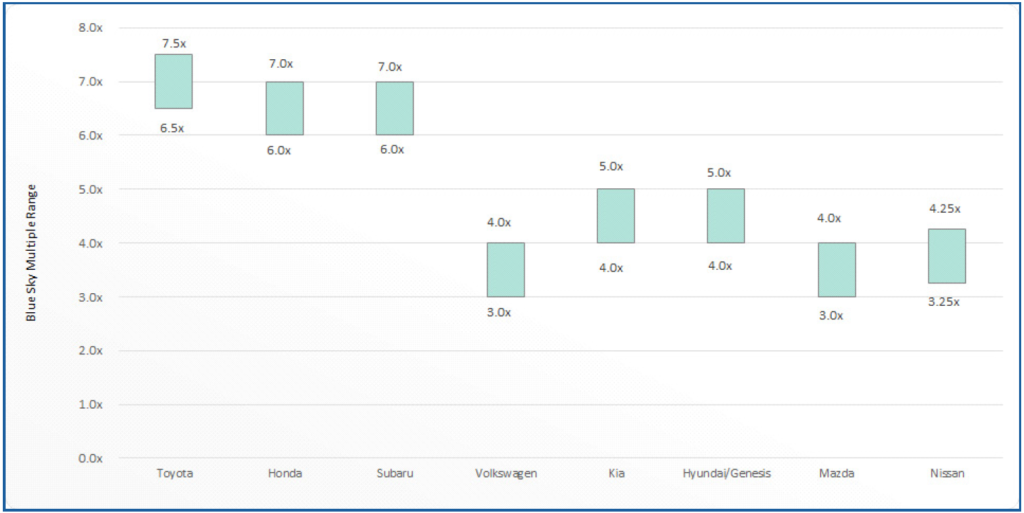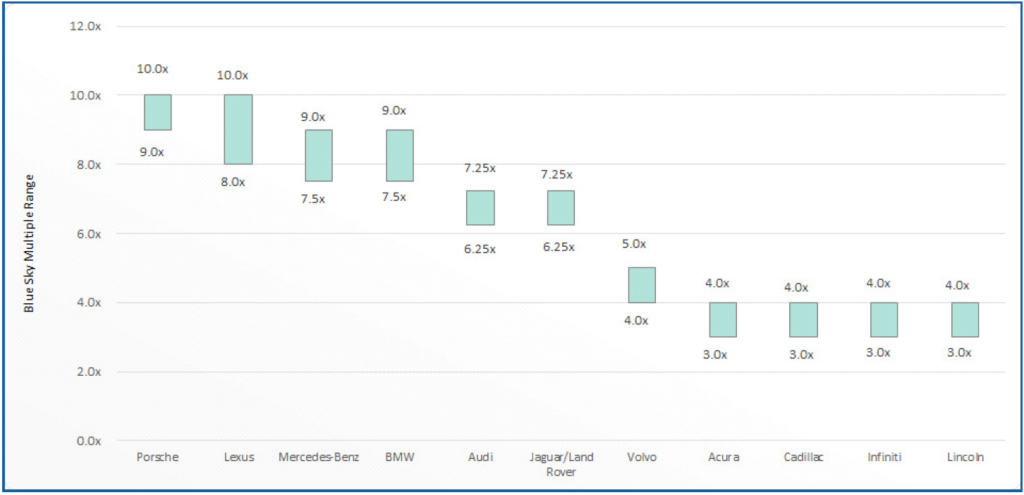The auto dealership industry is one of the largest retail industries in the United States. According to the National Automobile Dealers Association, in 2021 sales from the 16,676 franchised auto dealers in the United States topped $1.18 trillion. The second largest household payment each month is for a vehicle. The industry is highly fragmented as 93% of owners operate 1 to 5 dealerships.
A common valuation method used in the auto dealership industry is the “Blue Sky Method”. The Blue Sky Method estimates the dealership’s intangible asset and goodwill value as a multiple of adjusted pre-tax income. This value is known as the “Blue Sky Value.” The dealership’s other assets and liabilities are then added and subtracted from the Blue Sky Value to arrive at the value of the dealership. Discounts for lack of control and lack of marketability may also be applicable depending on the valuation purpose and subject interest valued.
Blue Sky multiples vary by franchise. For example, buyers may be willing to pay a premium for a luxury franchise, due to higher profit margins from the franchise. Other factors include the quality of the vehicles, optimism for future vehicle models, the dealership and franchise relationship/franchise management quality, franchise market share, number of dealerships, and facility update requirements. The auto dealer advisors Haig Partners and Kerrigan Advisors publish a range of Blue Sky Multiples by the franchise on a quarterly basis. See the following figures for the Haig Partners Q2 2022 multiples.



So, what factors impact the Blue Sky Multiple selections for a valuation? Location is key. A dealership located in a highly populated area will demand a higher multiple. Growing metro markets will also demand a premium. Demand/Blue Sky Multiples are also higher in states with no state income tax like Florida and Texas. The number of franchises within a driving radius of a dealership’s location will also impact the multiple. Additionally, real estate costs will affect the Blue Sky Multiple. High real estate costs could depress the Blue Sky Multiple. Underperforming, dealerships will actually demand a higher multiple as the buyer will have an opportunity to acquire the franchise agreement for a certain geographic market and improve the performance of the dealership.
As discussed, the Blue Sky Multiple is applied to adjusted pre-tax income. Common normalization adjustments to the income of the dealership include:
- LIFO Inventory - Dealerships typically use LIFO to account for vehicle inventory. This method tends to overstate the cost of sales. Therefore, the LIFO reserve is added to income.
- Owner’s Compensation - Compensation paid to the owner and their relatives may need adjusted to reflect market compensation.
- Interest - Non-Floorplan interest and excessive floorplan interest are added to income.
- Rent - Typically the dealership owner also owns the real estate that the dealership operates out of. A market rent adjustment is often required to normalize income.
- Perquisites - Personal expenses paid by the dealership are added to income.
Author: Trevor Shaw | [email protected]
Contact Us
For more information on this topic, please contact a member of Withum’s Dealership Services Team.



